POLYFLEX®ADVANCED PU – Plug expansion joint
The flexible plug expansion joint system, POLYFLEX-ADVANCED PU, is a completely new development based on elastic polymers and herewith a new generation of flexible plug expansion joints. Compared to other expansion joint designs, flexible plug expansion joints offer several advantages including: unsurpassed driving comfort, nearly zero noise emission, 100 % water tightness, highly flexible installation possibilities in sections (e.g. lane-by-lane), etc. The POLYFLEX-ADVANCED PU joint uses a durable, fully elastic material with a very high tear resistance and at the same time causing very low reaction forces.
Media
Principle
The new POLYFLEX®ADVANCED PU Flexible Plug Expansion Joint System achieves a completely new standard in terms of quality and working life.
Compared to other expansion joint designs, flexible plug expansion joints offer several advantages including unsurpassed driver comfort, no added noise emission, watertight, installable in sections (e. g. lane-by-lane), etc.
Traditional bituminous based expansion joint materials have several disadvantages. Softer materials with lower reaction forces are not sufficiently stable and deform plastically at high temperatures and traffic loads (especially when vehicles are braking). By contrast, a harder material has higher reaction forces – causing surface debonding at lower temperatures which leads to leakages.
Varying quality due to proper mixture and temperature during installation (at appr. 180 °C / 356 °F) and limitation to small movements also frequently cause problems. The elastoplastic behavior of bituminous mixtures causes permanent loads (e. g. ballast gravel) to sink into the material. For this reason, conventional bituminous plug joints are not suitable for railway bridges with ballast beds, whereas POLYFLEX® joints are.
mageba's new flexible PU material (developed in cooperation with leading chemical industries) and special joint design have solved the above-mentioned problems. Additionally, it is a unique solution for the design of integral bridges as a crack-free link between bridge and abutment.
Characteristics
The POLYFLEX®Advanced joint uses a durable fully elastic material with an enormous tear resistance and low reaction forces. Perforated steel angles within the PUmaterial help to accommodate horizontal braking and reaction forces and allow for a clean bond between surfaces free of leakages from ingressing water.
The new material has an exceptionally long lifespan and is resistant to wear and environmental and chemical influences. Its working life is substantially higher than that of most roadway surface materials.
The original PU material has a long history of use as waterproofing for roofs and has been constantly improved over the years. The material has shown test values of 650 % elongation before breaking (compared to 350-400 % for standard rubber), which makes the material a perfect choice for use in expansion joint systems.
PU material can be cast for nearly any joint shape (e. g. upstands, skew, T and X joints, etc.). The two-component material is mixed in complete packing units at ambient temperature, thus avoiding the possibility of on-site mixing failures. Processing is possible at temperatures between 5 °C and 35 °C (41 °F and 95 °F), virtually independent of humidity. The joint can be driven over after a few hours. Full functionality of the joint is given in a temperature range between –50 °C and 70 °C (–58 °F and 158 °F), which is a major improvement over bituminous plug joints.
The flexible plug expansion joint system, POLYFLEX®ADVANCED PU, is a completely new development based on elastic polymers and a further development of the traditional asphaltic plug joint, whereby disadvantages of the traditional bituminous plug joint (e. g. debonding, plastic deformation, rutting, overload due to standing traffic, etc.) can be eliminated.
An essential advantage of the POLYFLEX®ADVANCED PU expansion joint system is the individual adaptation of each joint to the unique requirements of each bridge. Thicknesses and widths of these joints are set to the most efficient and economical dimensions possible, without the limitations of standard requirements.
Total movements of up to 100 mm (4 in) have been accommodated in several countries on various projects in successful operation since 2007.
With state of the art manufacturing technology, a highly qualified staff, and a quality management according to EN ISO 9001:2008, mageba has the capabilities and experience to accomplish these projects.
Advantages & Properties
- Exceptionally long working life, longer than adjacent surfaces
- Highest possible driver comfort
- No noise from crossing traffic due to surface that is flush with adjacent road
- Watertight
- Maintenance-free, cleaning not required
- Suitable for new structures and refurbishments
- Quickly installed lane-by-lane with minimal impact on traffic, drivable after a few hours (overnight installation)
- Installation within a wide temperature range (5 °C to 35 °C / 41 °F to 95 °F)
- Wear-resistant, no mechanical wear parts
- No rutting, high resistance to abrasion (e. g. braking traffic, mountain areas, etc.)
- Damages in the joint can be easily repaired by reactivation of the PU material (e. g. scratches from snowplows etc.),
- No recess for anchorage in structural concrete necessary
- Surfacing (asphalt or concrete) can be applied continuously before joint installation
- Any horizontal bend in the direction of joint possible
- Any curb or sidewalk detail possible
- No noise emission due to tire impact with adjacent structural parts
- Not susceptible to vibrations
- Low reaction forces
- Cold processing and easy material handling with preset mixing ratio, thus no mixing defects
- Resistant to environmental influences and chemicals
- Resistant to alkaline, acids, chlorides, etc.
- Free of germs and fungus,
- Grey color to match roadway surface (special color available upon request)
- Smooth surface ideal for walking areas of airports or railway stations
Damage Repair & Partial Installations
Traffic accidents or road maintenance vehicles such as snowplows can cause damage to traditional expansion joints leading to high repair costs.
Local damages to the POLYFLEX®ADVANCED PU joint material are repaired easily by cutting out the affected areas from the surface followed by chemically reactivating the cured PU material.
Then, the damaged areas can be filled up with new PU material and the surface coating, if any, can be applied to the refurbished areas. A similar procedure of chemically reactivating cured material is done at partial installations, e. g. if a lane-by-lane installation is necessary
Design Principles
The POLYFLEX®ADVANCED PU filling material shows excellent adhesion to the supporting structure as well as to the adjacent surfacing and is therefore capable of safely transferring horizontal loads to the structure.
Additionally, perforated steel angles, which are fully embedded within the joint material, are bolted to the structure and can transfer even the highest loads (e. g. from heavy vehicles braking on the joint at downward slopes).
These steel angles also support the adjacent surfacing so as to prevent the asphalt from being depressed into the sides of the joint material.
It is strongly recommended to use additional transition strips or support ribs to secure the strength of adjacent bituminous surfacing areas.
A cover plate bridges the structural gap and is designed to withstand all traffic loads while stabilizing elements within the joint material restrain vertical displacements to limited values. These values are derived from the "ETAG032 – Guideline for European Technical Approvals of Expansion Joints for Road Bridges" and ensure traffic safety as well as for a perfect driver comfort.
The waterproofing membrane of the structure is integrated into the joint filling material or the polymer concrete bedding material for the substructure to make the whole system watertight.
Consulting
mageba offers full technical support to help determine the proper joint width and details with consideration of all technical and economic aspects in order to calculate the optimum and most cost-effective solution.
POLYFLEX®ADVANCED PU flexible plug expansion joints can be installed either by mageba personnel or by customer personnel, so long as they are specially trained and certified by mageba. Supervision of installation works can also be provided by mageba experts upon request.
A valid ISO 9001 certification, 100 % factory production control and continuous third party quality control by a German governmental body, the Material Testing Institute of the University in Stuttgart (MPA) ensure both the high quality level of products and manufacturing facilities.
Installation
For new structures, the bituminous surfacing shall be made in advance. For concrete surfacing and at edge beams, adequate recesses shall be provided.
If the joint is installed upon a concrete support, the minimal nominal compressive strength must be 25 N/mm².
To ensure watertightness of the whole system, the waterproofing membrane shall be applied up to the bridge gap. During installation of the POLYFLEX®ADVANCED PU joint, the waterproofing is cut and integrated into the PU material or the polymer concrete substructure.
Customer Support
mageba product specialists are pleased to provide advice in the selection of the optimal solution for any project and to provide pricing.
Please visit www.mageba.ch for further product information, including reference lists and tender documentation.

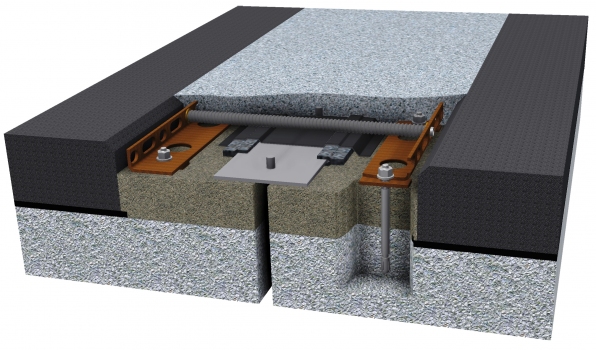
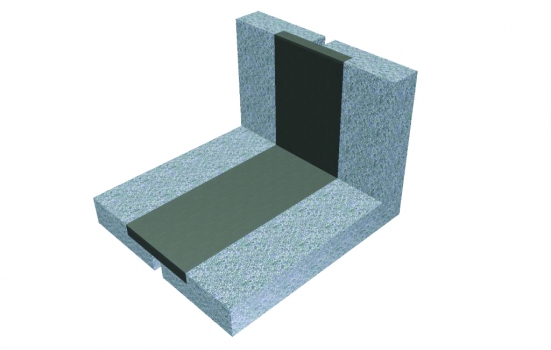
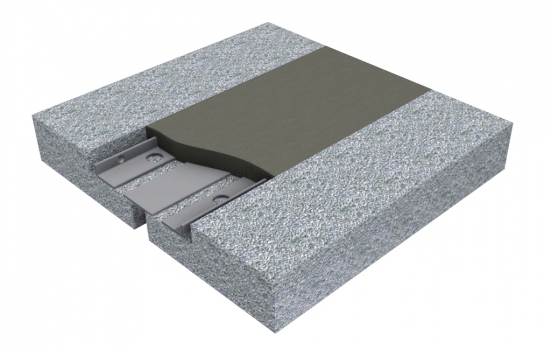

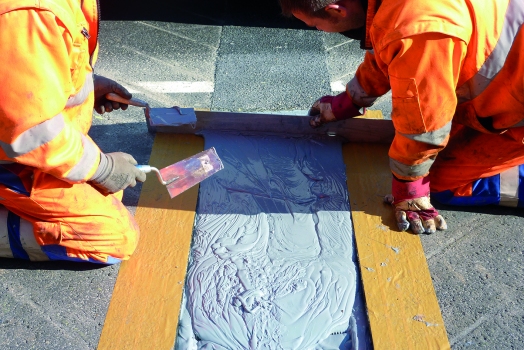
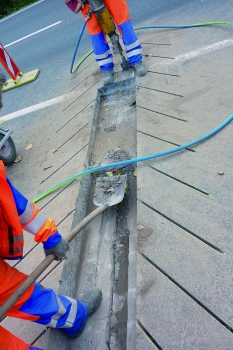
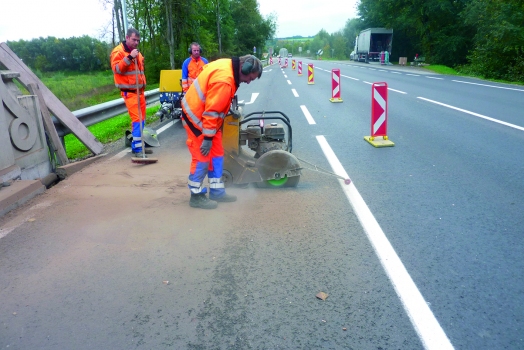
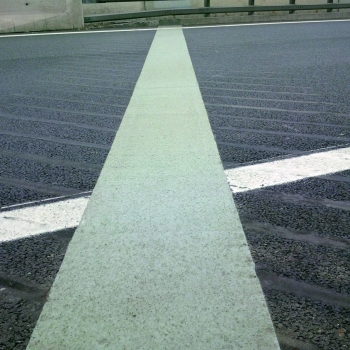
 mageba group
mageba group





